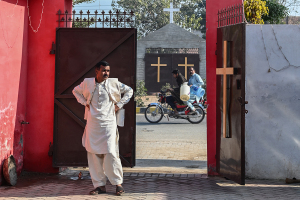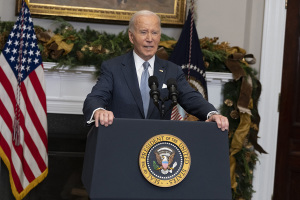Oklahoma's Highest Court Rules Against Ten Commandments Display on Gov't Property

Oklahoma's Supreme Court ruled that a Ten Commandments display on the capitol grounds of Oklahoma City must be removed.
In a 7-2 decision released Tuesday, the state's highest court concluded that the privately-funded 6-foot tall granite monument violates the Oklahoma constitution, which states, "No public ... property shall ever be appropriated, applied, donated, or used, directly or indirectly, for the use, benefit, or support of any ... system of religion ...."
"Because the monument at issue operates for the use, benefit or support of a sect or system of religion, it violates Article 2, Section 5 of the Oklahoma Constitution and is enjoined and shall be removed," concluded the opinion, overturning a lower court decision.
In 2012, a Ten Commandments monument was installed on the grounds of the Oklahoma City Capitol Building, which was paid for with private donations.
The display came three years after a bill passed allowing for monuments to be installed at the public facility like the Decalogue.
The Decalogue was about six feet tall and three feet wide, being placed on a base approximately ten feet from the building's north transept.
In August 2013, the American Civil Liberties Union of Oklahoma filed a lawsuit on behalf of a Baptist minister who argued that the display was unconstitutional.
The Capitol Decalogue garnered more attention as American Atheists also filed a lawsuit against the display and a Satanist group lobbied to get a statue placed on the grounds, arguing equal access.
Last September, Oklahoma County District Judge Thomas Prince ruled in favor of the display, arguing that like other displays at the Capitol the Ten Commandments had a blend of historical and spiritual significance.
"Many of these monuments and plaques depict both the secular and spiritual history of Oklahoma," wrote Prince, who noted that multiple images of Native American spiritual imagery exists in the various monuments.
"In short, the evidence demonstrates that the Ten Commandments Monument is one of many monuments and works of art, all rich with symbolism (some religious), that dot the Capitol Grounds."
Brady Henderson, legal director of the ACLU of Oklahoma, said in a statement last September that his organization disagreed with Prince's decision.
"We will appeal this decision and ask the Oklahoma Supreme Court to find that the Oklahoma Constitution does not give the government the power to cheapen inherently religious texts," stated Henderson.
Regarding the state supreme court's decision, Oklahoma Attorney General Scott Pruitt stated that the justices "got it wrong."
Pruitt has filed a petition for rehearing, which according to local news should delay the removal of the Ten Commandments monument.
Meanwhile, state Republican legislators including Rep. Kevin Calvey have called for the impeachment of the justices who ruled against the Decalogue.
"These Supreme Court justices are nothing more than politicians in black robes, masquerading as objective jurists," stated Calvey.
"This ruling is the court engaging in judicial bullying of the people of Oklahoma, pure and simple. It is time that the people chose jurists."





























